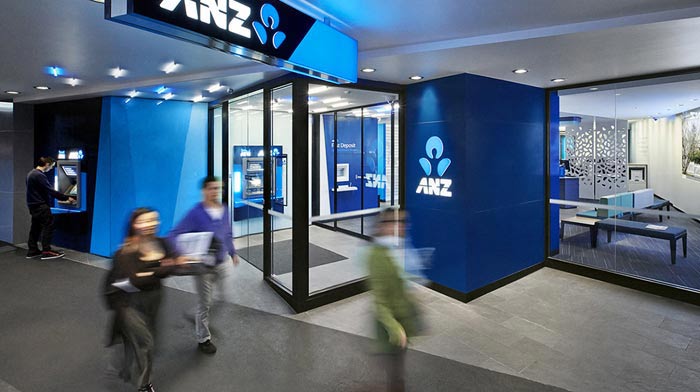The cost of responding to natural disasters is rising, with $11.4 billion allocated in the Albanese Government’s 2024-25 Budget to continue supporting ongoing recovery efforts across Australia.
Through Disaster Recovery Funding Arrangements, the Federal Government assists State and Territory Governments by cost-sharing support measuring following a declared disaster event.
The funds set aside in the Budget will allow the Albanese Government to meet its commitments under the Disaster Recovery Funding Arrangements – and reflects an increase of $3.9 billion from the 2023-24 Mid-Year Economic and Fiscal Outlook (MYEFO).
The additional funding has been set aside in recognition of the damage incurred, particularly through the extensive flooding throughout NSW, including the Northern Rivers and Central West; flooding in South-East Queensland; and ex-Tropical Cyclone Jasper in Far North Queensland.
Minister for Emergency Management, Murray Watt said the $11.4 billion would cover the federal share of programs already underway across the country.
“These programs are already in action in disaster-impacted areas, and are making a huge difference to communities through repairs to roads and footpaths; primary producer and small business grants; tourism packages and mental health access – just to name a few,” Minister Watt said.
“Councils need to assess the damage, tender for works, deal with cost increases and supply chain demands, and we acknowledge the rising costs involved in getting on with the job.
“The last few years have seen Australians face some of the worst natural disasters in living memory, and recovery from these concurrent, consecutive and compounding events will take many years.
“In the past six months alone, 44 natural disasters have been declared across Australia. Over 190 Local Government Areas were impacted, including 60 areas which were impacted more than once.”
Minister Watt said the increase provided assurance to significantly impacted communities that assistance is available to meet their remaining recovery needs.
“It’s eye-watering to know that this is just the cost our Government is shouldering, and we know all levels of Government are also spending considerable amounts of money building communities back up,” Minister Watt said.
“It’s clear that disasters are costly, but this investment is a sharp reminder of why it’s crucial to invest in proactive works, so that regions can be better prepared, and recover faster from future disasters.”
“Report after report says it’s less expensive to invest in mitigation and resilience work than to respond after a disaster. For every dollar spent on disaster risk reduction, there’s nearly a $10 return on investment.
“That’s why the Albanese Government created the Disaster Ready Fund to invest up to $1 billion over five years, matched where possible with co-contributions by State and Territory Governments and other funding partners, improving risk and resilience by investing in important disaster mitigation projects.
“After a lost decade of federally-led work under the former Coalition Government, Councils and State and Territory Governments finally have a partner to help them better prepare regions for future weather events.”
Further information:
In addition for the Disaster Ready Fund, the Albanese Government has undertaken other significant improvements to the way Australia prepares for future disaster events, including:
- Investing $48 million a year to support the National Aerial Firefighting Centre (NAFC) to lease and position the largest ever national fleet of highly specialised aircraft for use by state and territory governments.
- Building a National Emergency Management Stockpile, which includes key resources such as emergency shelter, water and electricity, to enable states and territories to quickly access these resources in times of need.
- Investing in Disaster Relief Australia to provide recovery and clean up support after disasters. DRA’s veteran-led operating model provides a trained, on the ground force during recovery and relief efforts.
- Opening an upgraded National Situation Room (NSR) and the National Joint Common Operating Picture, which enables collaboration amongst federal, state and territory government agencies and non-government organisations during a crisis including obtaining satellite imagery from partner agencies as well as predictive analysis to anticipate likely challenges and associated impacts on communities.
- Unifying the two arms of federal emergency management to create the National Emergency Management Agency (NEMA), to be more efficient in disaster management.
- Through NEMA, coordinating partnerships with state and territory emergency services organisations, industry, the not-for-profit sector and other representative groups, which will enable a higher level of readiness for the upcoming season.
- A new, simplified Australian Fire Danger Rating System so that no matter where someone is, they understand the fire risk and what action they need to take.
- Continuing our work with the insurance sector through the Hazards Insurance Partnership and across the federal government to identify further ways to reduce disaster risk and put downward pressure on premiums.
On Disaster Recovery Funding Arrangements (DRFA):
The DRFA is joint Commonwealth and State government funding, providing financial assistance to help communities recover from eligible disasters.
Programs are administered by State, Territory and Local Governments, with the cost-share arrangement allowing funds to be recuperated from the Commonwealth.








